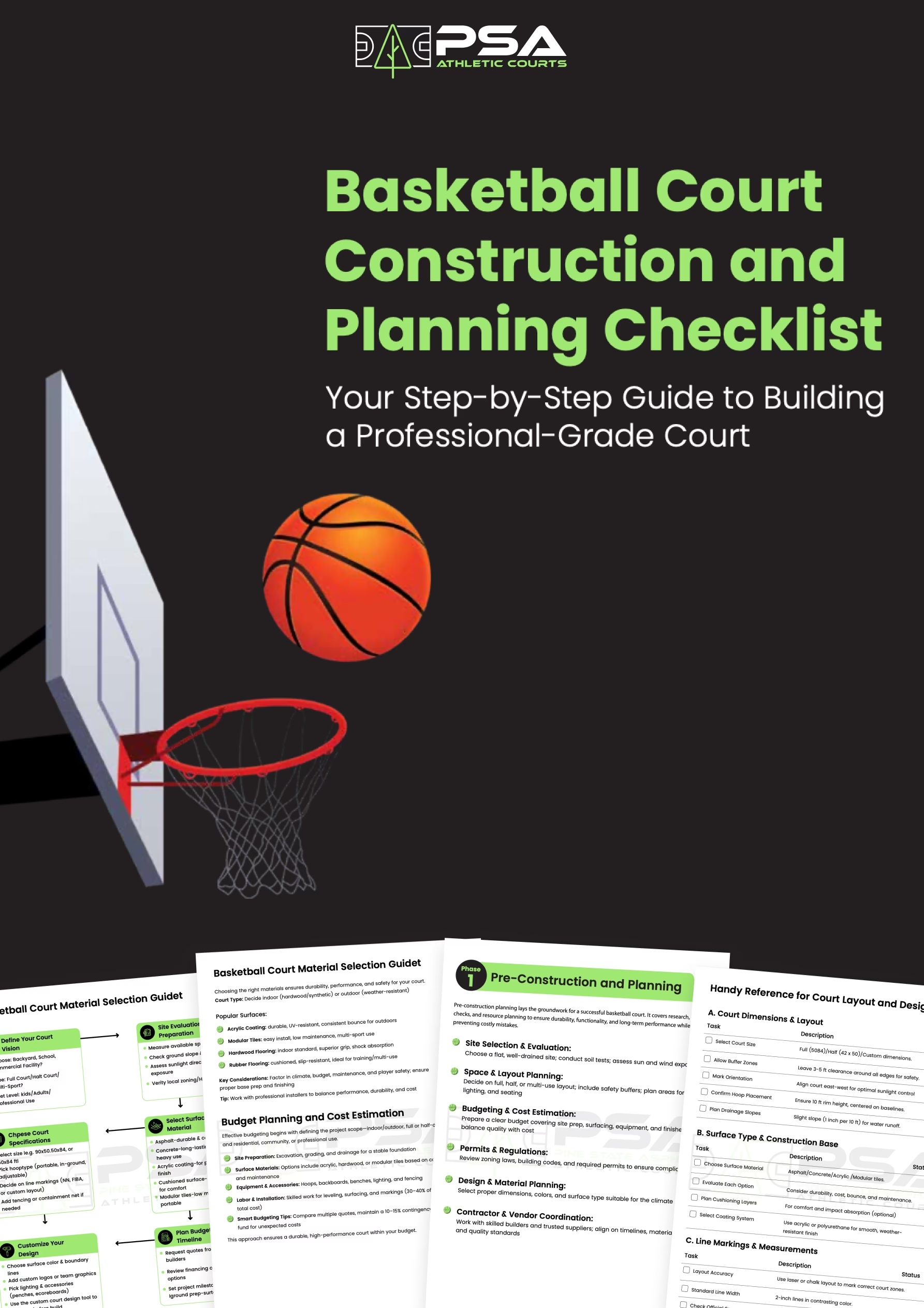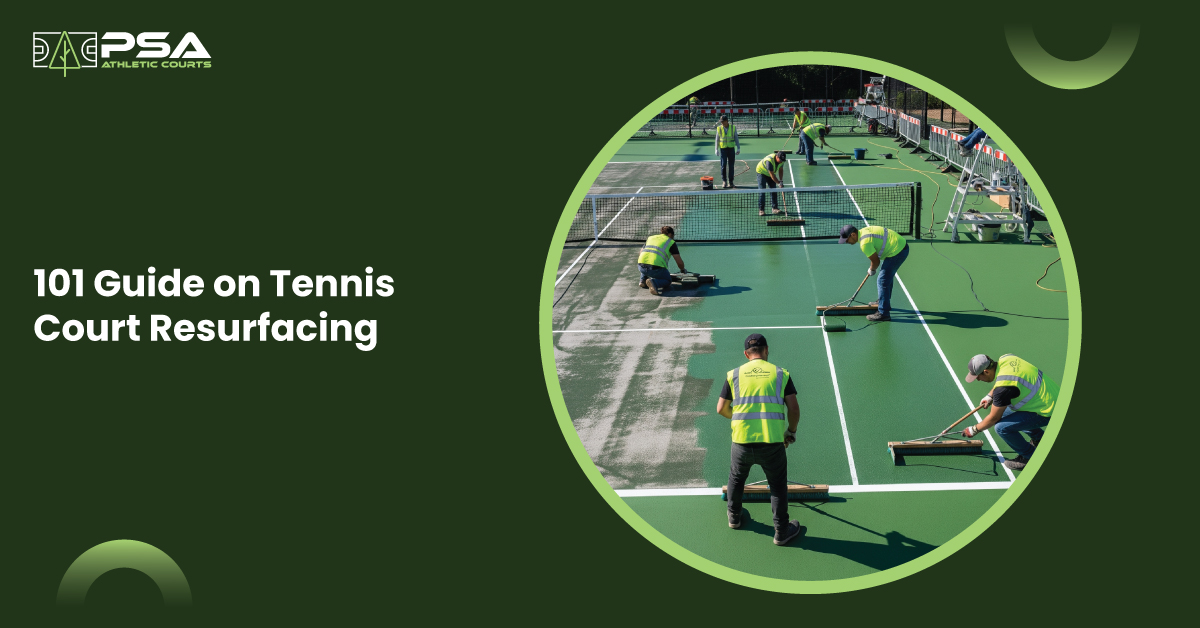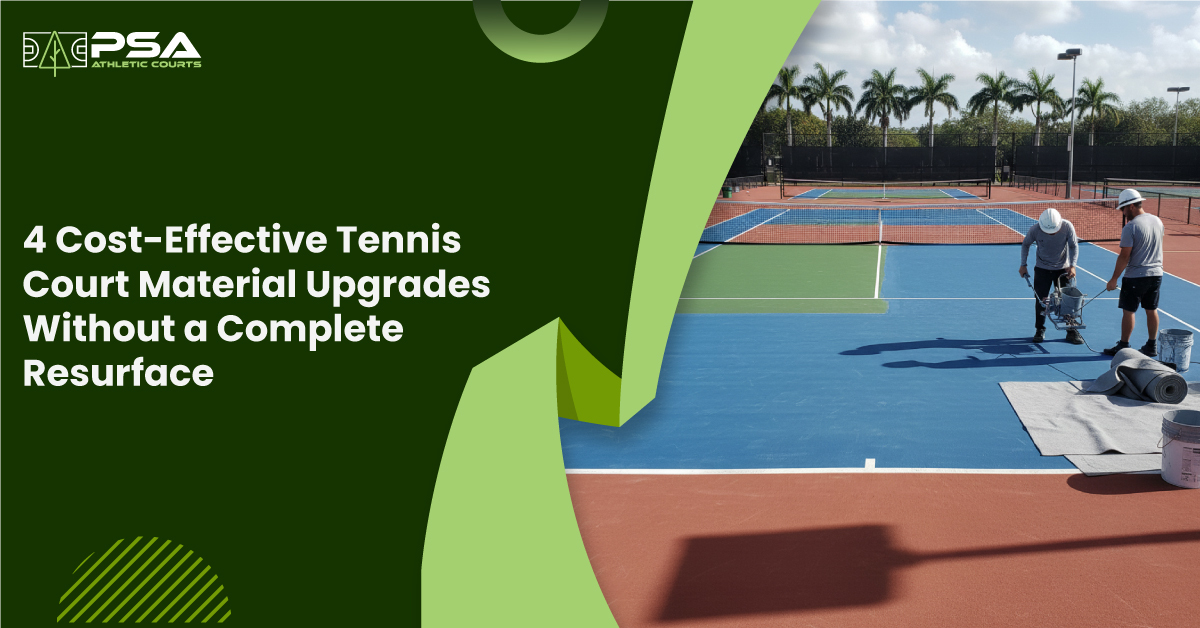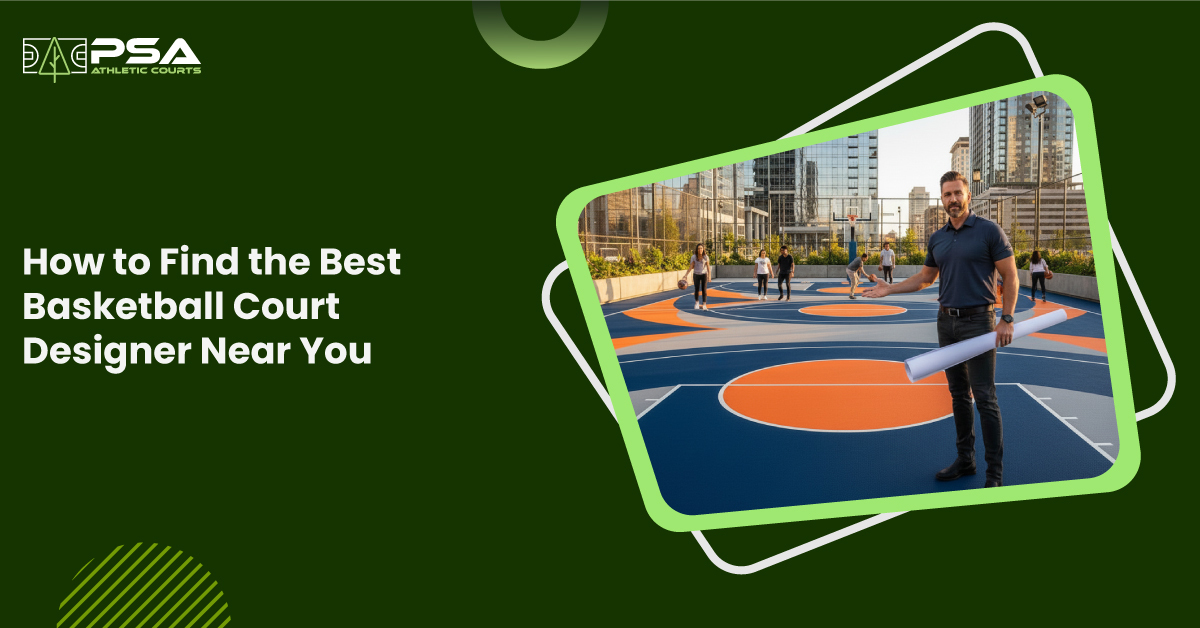Tennis court resurfacing is a necessary rite of passage that all tennis courts go through; it is more than just a touch-up. It extends the durability, safety, and functionality of the tennis court. But what exactly does tennis court resurfacing mean, and how does it impact the gameplay? If you have these questions running through your mind right now, then this blog is for you!
Let’s start with the basics:
What is Tennis Court Resurfacing?
Over the course of its usage, a tennis court wears out. This is a result of frequent use and exposure to the elements (rain, wind, sun, and extreme temperatures). This leads to the formation of cracks, fading lines, and an uneven surface of the court.
These issues negatively impact the gaming experience, necessitating resurfacing for optimal performance. Tennis court resurfacing simply means to renovate and enhance the surface of the tennis court, improving the ball bounce and overall gaming experience.
When Should You Resurface a Tennis Court?
If you are wondering whether your court needs resurfacing, then check out your tennis court for the following issues:
- Cracks, rips, or tears in the playing surface
- Water is pooling on the surface due to inefficient drainage
- Fading colour
- Surface bubbling caused by movement
- Mould and mildew regrowing often
If these issues explain the condition of your court, then it is time for a tennis court makeover!
Benefits of Tennis Court Resurfacing
Before we dive into the details of resurfacing the tennis court, let’s look at what you stand to gain from this process:
- Enhanced Playing Surface: The uneven surface and cracks on the court often compromise the ball bounce, frustrating the players to no end. Resurfacing will not only enhance the gaming experience but will also allow the players to give their best to the game.
- Durability of the Court: Resurfacing the tennis court and ensuring its maintenance increases the overall life of the court so you do not have to worry about full surface replacement.
- Cost-Effective Maintenance: It is a cost-effective measure that allows correcting any surface irregularities or structural faults without tearing down the whole court. At Pine State Asphalt Athletic Courts, we use a special membrane to cover the crack after filling it, allowing the surface to expand and contract with temperature change, giving you a long-lasting court that needs less frequent maintenance.
- Improved Safety of the Players: An even playing field increases the safety of the players, making room for shock absorption, minimizing the impact on players' muscles and joints, and preventing any slips or falls.
- Increased Property Value: Tennis court resurfacing also enhances the overall aesthetics and appeal of the court. This increases the value of your property.
- More Game Time: No more cancelling a game because of a flooded tennis court surface. Resurfacing your tennis court improves its drainage so the puddles clear out more quickly, and you can get back to the game sooner.
Steps Involved in Resurfacing a Tennis Court
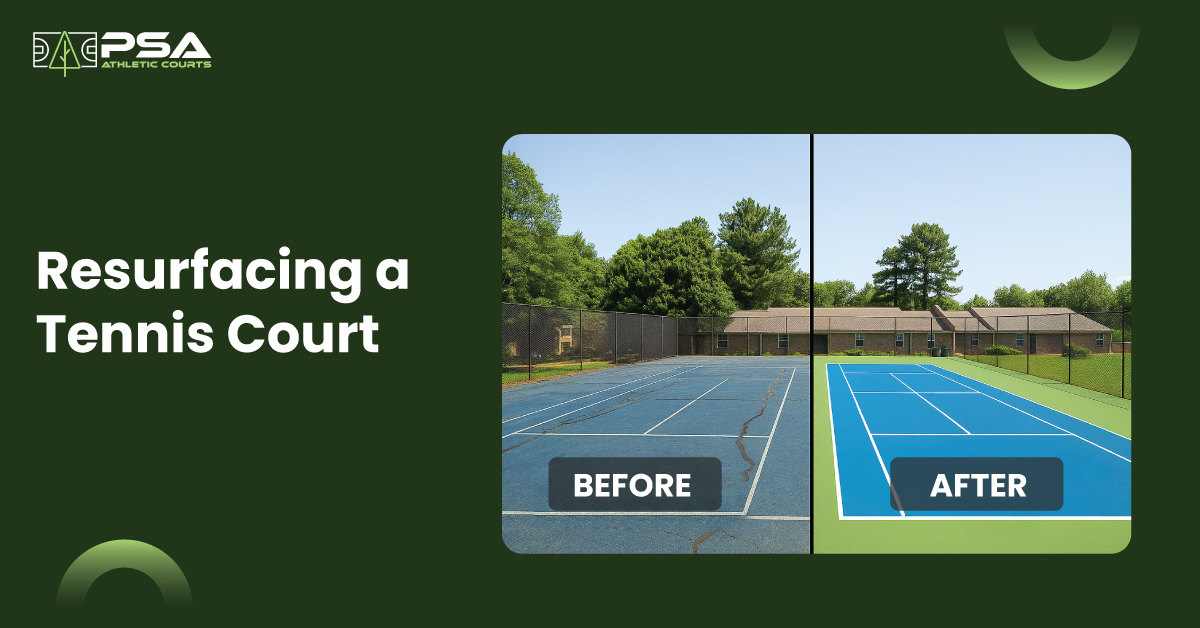
The entire process of resurfacing a tennis court is a complex one so it is best not to DIY it and leave it to the professionals. At Pine State Asphalt Athletic Courts, we do not just build new courts but also offer regular maintenance and resurfacing so your court stays in its best shape.
Let’s have a look at the process of tennis court resurfacing:
- Assessment: This step involves evaluating the court's current condition, including the foundation and surface.
- Material Selection: At Pine State Asphalt Athletic Courts, we use only ITF-approved surfaces and consider factors like court pace, texture, and weather resistance while resurfacing the court.
- Foundation Repair: In this step, we address any issues with the base of the court, such as any cracks or unevenness.
- Resurfacing: Next comes applying the new surface material to ensure an even playing field.
- Line Marking: Its time to enhance the aesthetics by marking accurate lines as per the ITF standards.
- Final Inspection: Before handing over the court to you, we ensure it meets all requirements for player use.
PRO-TIP: By taking appropriate care of your court, you can not only improve its longevity but also extend the time between resurfacing jobs. Check out our guide to maintaining your tennis court here.
How Much Does Tennis Resurfacing Cost?
The tennis court resurfacing cost depends on a lot of factors, including the size of your court, the materials used for resurfacing, and how much damage needs to be repaired before resurfacing. However, the silver lining here is that it is a lot less than replacing the court.
Takeaway
Tennis court resurfacing breathes life into your worn-out playing field, ensuring better gameplay and less chances of accidents. With Pine State Asphalt Athletic Courts’ expert team, your tennis court will look as good as new in no time so your players don’t lose out on the practice they need to win the next Grand Slam!
DOWNLOAD OuR
FREE GUIDE
Ready to build your dream court?
Download our FREE Basketball Court Construction & Planning Checklist and get the step-by-step roadmap to building a professional-grade court—from budget planning to final touches.
No guesswork, just results.
